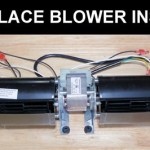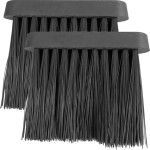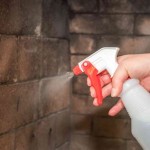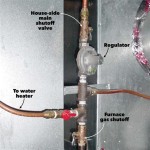How To Remodel a Fireplace: A Comprehensive Guide
Remodeling a fireplace can dramatically transform the aesthetic of a living space, breathing new life into a focal point and enhancing the overall ambiance of the room. Whether the goal is to modernize an outdated design, repair structural damage, or simply update the materials, a fireplace remodel requires careful planning and execution. This article provides a comprehensive guide to approaching a fireplace remodeling project, outlining key considerations and steps to ensure a successful outcome.
Before embarking on any physical alterations, it is crucial to thoroughly assess the existing fireplace structure. This assessment should encompass both the aesthetic appeal and the functional integrity of the fireplace. A detailed examination can help identify potential problems, inform design decisions, and prevent unexpected complications during the remodeling process.
The initial assessment should involve a visual inspection of the firebox, the surrounding firebrick or stone, the mantel, and the hearth. Cracks, crumbling materials, or signs of water damage should be documented. Furthermore, it is essential to evaluate the chimney and flue for any blockages or structural issues. A professional chimney sweep can provide a thorough inspection and recommend any necessary repairs. Neglecting chimney maintenance can lead to hazardous conditions, including carbon monoxide buildup and chimney fires.
Beyond the visual inspection, it's important to consider the functional performance of the fireplace. Does it draw air properly? Is there excessive smoke entering the room? These issues may indicate problems with the damper, the flue size, or the chimney draft. Addressing these functional concerns during the remodeling process is crucial to ensure the fireplace operates safely and efficiently.
Planning and Design Considerations
Once the existing fireplace has been thoroughly assessed, the next step involves developing a detailed plan for the remodel. This plan should encompass both the aesthetic design and the practical considerations, ensuring that the finished fireplace meets the homeowner's needs and preferences while adhering to safety standards and building codes.
The design phase should begin with brainstorming and gathering inspiration. Consider the overall style of the room and choose materials and finishes that complement the existing décor. Modern, traditional, rustic, and contemporary are just a few of the common design styles to consider. Online resources, magazines, and showrooms can provide valuable inspiration and help refine the desired aesthetic.
Beyond the visual design, it is important to consider the functionality of the remodeled fireplace. Will it be used primarily for ambiance, or will it serve as a supplemental heat source? This decision will influence the type of firebox to install, the choice of fuel (wood, gas, or electric), and the need for any additional features, such as a blower or thermostat.
One of the most significant design decisions involves selecting the materials for the fireplace surround. Common choices include brick, stone, tile, wood, and metal. Each material offers a unique aesthetic and varying levels of durability and heat resistance. Brick and stone provide a classic, timeless look, while tile offers a wide range of colors and patterns. Wood can add warmth and character, but it must be properly treated to withstand the heat. Metal surrounds can create a sleek, modern aesthetic.
The mantel is another key element of the fireplace design. It serves as a focal point and provides a surface for displaying decorative items. Mantels can be crafted from wood, stone, or metal, and their design should complement the overall style of the fireplace. Consider the size and shape of the mantel in relation to the surrounding space and ensure it is securely attached to the wall.
The hearth is the non-combustible area in front of the fireplace opening. It protects the flooring from sparks and embers and provides a safe landing zone for tending to the fire. The hearth should extend at least 16 inches in front of the fireplace opening and 8 inches on either side. Materials commonly used for hearths include brick, stone, tile, and slate.
Finally, it is essential to factor in building codes and safety regulations when designing the fireplace remodel. Local codes may dictate specific requirements for fireplace construction, ventilation, and clearance from combustible materials. Consulting with a qualified building inspector or contractor can help ensure that the remodel complies with all applicable regulations.
Demolition and Preparation
Before beginning the actual remodeling work, it is necessary to carefully demolish the existing fireplace surround and prepare the area for the new construction. This process requires careful planning and execution to minimize dust and debris and to avoid damaging the surrounding walls or flooring.
The first step is to protect the surrounding area from dust and debris. Cover the flooring with drop cloths and tape plastic sheeting over doorways and furniture. Wear safety glasses, a dust mask, and gloves to protect yourself from airborne particles and sharp objects.
If the existing fireplace surround is made of brick or stone, use a hammer and chisel or a demolition hammer to carefully remove the materials. Start at the top and work your way down, being careful not to damage the underlying wall. If the surround is tiled, use a tile cutter or a grout saw to remove the tiles. For wood surrounds, use a pry bar to carefully detach the wood from the wall.
Once the old surround has been removed, thoroughly clean the area to remove any remaining dust and debris. Inspect the underlying wall for any damage and make any necessary repairs. If the wall is uneven or damaged, it may be necessary to apply a layer of patching compound or cement board to create a smooth, level surface for the new surround.
Before installing the new surround, it is important to ensure that the firebox and chimney are in good working order. Clean the firebox and inspect it for cracks or damage. Have the chimney inspected and cleaned by a professional chimney sweep to remove any creosote buildup or obstructions. Repair any cracks or damage to the chimney liner to prevent carbon monoxide leaks and chimney fires.
If the fireplace is being converted from wood-burning to gas or electric, it will be necessary to install the appropriate venting and electrical connections. A qualified plumber or electrician should handle these tasks to ensure that the fireplace operates safely and efficiently.
Installation and Finishing Touches
With the demolition complete and the area prepared, the next phase involves installing the new fireplace surround and adding the finishing touches to create a beautiful and functional focal point.
The installation process will vary depending on the materials chosen for the surround. For brick or stone surrounds, apply a layer of mortar to the wall and carefully position the bricks or stones, ensuring that they are level and plumb. Use spacers to create uniform joints between the bricks or stones. Once the mortar has dried, apply grout to fill the joints.
For tile surrounds, apply a layer of thin-set mortar to the wall and carefully position the tiles, using spacers to create uniform joints. Once the mortar has dried, apply grout to fill the joints. Wipe away any excess grout with a damp sponge.
For wood surrounds, attach the wood panels to the wall using screws or nails. Ensure that the panels are properly aligned and securely fastened. Fill any nail holes with wood filler and sand the surface smooth. Apply a layer of primer and paint or stain the wood to match the desired finish.
Install the mantel according to the manufacturer's instructions. Ensure that the mantel is securely attached to the wall and that it is level. Add any decorative elements, such as corbels or molding, to enhance the mantel's appearance.
Install the hearth according to the chosen materials. For brick or stone hearths, apply a layer of mortar to the floor and carefully position the bricks or stones. For tile hearths, apply a layer of thin-set mortar to the floor and carefully position the tiles. Ensure that the hearth extends the required distance in front of the fireplace opening and on either side.
Once the surround, mantel, and hearth have been installed, add the finishing touches to complete the remodel. This may include installing a decorative fire screen, adding firewood storage, or arranging decorative items on the mantel. Be sure to follow all safety guidelines when using the fireplace, and have it inspected regularly by a qualified chimney sweep.
Safety Considerations
Safety should be the paramount concern throughout the fireplace remodeling process. Neglecting safety precautions can lead to property damage, injury, or even death. It is imperative to adhere to all applicable building codes and safety regulations and to take appropriate measures to protect oneself and others from potential hazards.
When working with power tools, always wear safety glasses, ear protection, and gloves. Use tools that are in good working condition and follow the manufacturer's instructions. Be aware of the potential for electrical shock and take precautions to avoid contact with live wires.
When working with hazardous materials, such as mortar, grout, and paint, wear gloves and a respirator to protect yourself from fumes and irritants. Follow the manufacturer's instructions for handling and disposal of these materials.
Ensure that the fireplace is properly ventilated to prevent carbon monoxide buildup. Install a carbon monoxide detector in the room and test it regularly. Never burn artificial logs or other materials that are not specifically designed for use in fireplaces.
Keep flammable materials away from the fireplace opening and ensure that the fire screen is in place when the fireplace is in use. Never leave a fire unattended, and extinguish it completely before leaving the room or going to bed.
Have the fireplace inspected and cleaned regularly by a qualified chimney sweep. This will help prevent creosote buildup, which can lead to chimney fires. A regular inspection can also identify any potential problems with the chimney or flue.

30 Fireplace Remodel Ideas For Any Budget
5 Amazing Inexpensive Easy Fireplace Remodel Transformations Designed

Fireplace Remodel Kristen Rinn Design

Looking To Remodel Your Fireplace Tips You Need

17 Fireplace Remodel Before And After How To Your Brick Makeover Living Room Decor

Fireplace Update Before Afters Luce S Chimney Stove

Fireplace Remodel Renovation Gas Wood Electric

30 Fireplace Remodel Ideas For Any Budget

47 Amazing Fireplace Remodel Ideas To Diy Artsy Pretty Plants

Looking To Remodel Your Fireplace Tips You Need
Related Posts








